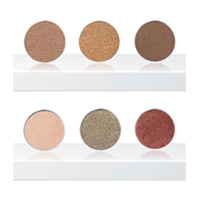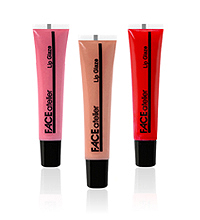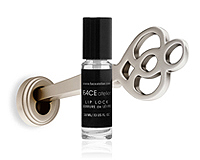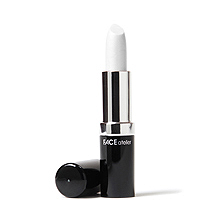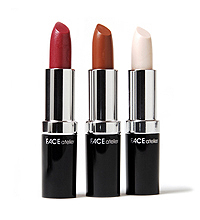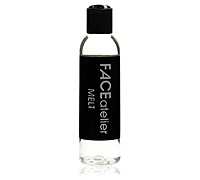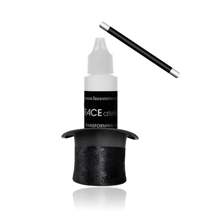INGREDIENTS + other stuff
interesting READING...
| the TRUTH about SPF PARABENS - FACT versus FICTION the MAGIC of SILICONES how SANITARY is your MAKEUP? MINERAL OIL + PETROLATUM - FACT versus FICTION |
INGREDIENTS
A-B l C-D I E-F l G-K l L-M l N-S l T-Z
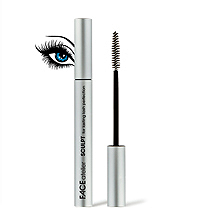 |
BRASH lash + brow gel AQUA, GLYCERIN, PVP, GLYCERYL POLYACRYLATE, CUCUMIS SATIVUS FRUIT EXTRACT, PROPYLENE GLYCOL, ALCOHOL DENAT, SODIUM HYALUROMAIE, AESCULUS HIPPO-CASTANUM EXTRACT, DIAZOUDINYL UREA, PANTHENOL, ASCORYL PALMITATE, TETRASODIUM EDTA, IODOPROPYNYL. |
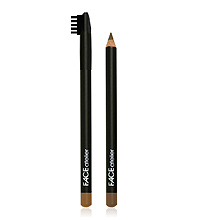 |
HYDROGENATED VEGETABLE OIL GLYCERIDES, BEHENYL ALCOHOL, SILICA, ISOPROPYL MYRISTATE, STEARALKONIUM HECTORITE, PROPYLENE CARBONATE, STEARIC ACID, JAPAN (RHUS SUCCEDANEA) WAX, HYDROGENATED VEGETABLE OIL, MINERAL OIL (PARAFFINUM LIQUIDUM), HYDROGENATED CASTOR OIL, TRILAURIN, CETYL PALMITATE, CAPRYLIC/CAPRIC TRIGLYCERIDE, TRISTEARIN, SYNTHETIC WAX, STEARYL HEPTANOATE, BUTYL STEARATE, PETROLATEUM, TALC, METHYLPARABEN, PROPYLPARABEN, BHA. MAY CONTAIN: TITANIUM DIOXIDE (CI 77891), MICA (CI 77019), IRON OXIDE GREENS (CI 77288), CHROMIUM HYDROXIDE GREEN (CI 77289), BISMUTH OXYCHLORIDE (CI 77163), CARMINE (CI 75470), FERRIC FERROCYANIDE (CI 77510), MANGANESE VIOLET (CI 77742), ALUMINUM POWDER (CI 7740). |
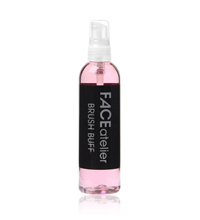 |
AQUA, ALCOHOL DENAT, DISODIUM LAUROAMPHODIACETATE, PROPYLENE GLYCOL, SODIUM TRIDECETH SULFATE, CETRIMONIUM CHLORIDE, TRICLOSAN. MAY CONTAIN: RED 33 (CI 17200). |
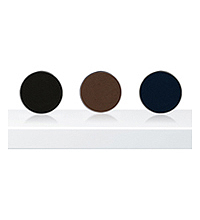 |
TALC, DIMETHICONE, METHICONE, POLYGLYCERYL-3, DIISO- STEARATE, ZINC STEARATE, OCTYLDODECYL, STEARATE, SILICATE, SILICA, LANOLIN OIL, METHYLPARBEN, PROPYL-PARABEN, TOCOPHERYL, TRIHYDROXYSTEARIN, TOCOPHERYL ACETATE. MAY CONTAIN: TITANIUM DIOXIDE (CI 78891), IRON OXIDE (CI 77491, 77492, 77499), ULTRAMARINES |
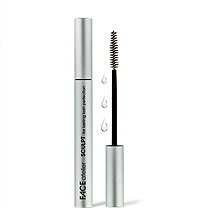 back to top |
AQUA, STYRENE/ACRYLATES/AMMONIUM METHACRYLATE COPOLYMER, PROPYLENE GLYCOL, ACRYLATES COPOLYMER, COPERNICIA CERIFERA (CARNAUBA) WAX, OLEIC ACID, STEARIC ACID, GLYCERYL DISTEARATE, MAGNESIUM ALUMINUM SILICATE, GLYCERYL STEARATE, PVP, PHENOXYETHANOL, BUTYLENE GLYCOL, AMINOMETHYL PROPANOL, SODIUM LAURETH-12 SULFATE, SODIUM BENZOATE, DEHYDROACETIC ACID, GLYCERIN, TITANIUM DIOXIDE, CAPRYLYL GLYCOL, TETRASODIUM EDTA, POTASSIUM SORBATE, TOCOPHERYL ACETATE MAY CONTAIN/PEUT CONTENIR: IRON OXIDES CI 77499, MICA CI 77019. |
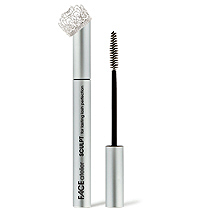 |
AQUA, STYRENE/ACRYLATES/AMMONIUM, METHACRYLATECOPOLYMER, PROPYLENE GLYCOL, GYLCERYL STEARATE, POLYBUTENE, COPERNICIA CERIFERA WAX, OLEIC ACID, CETEARYL ALCOHOL, CETEARYL ALCOHOL, DICETYL PHOSPHATE, GLYCERIN, CETETH-10 PHOSPHATE, CERA ALBA, ACRYLATES COPOLYMER, ACRYLATES COPOLYMER, TRIETHANOLAMINE, MAGNESIUM ALUMINUM SILICATE, PHENOXYETHANOL, PEG-40 HYDROGENATED CASTOR OIL, SODIUM BENZOATE, POLYIMIDE-1, PVP/EICOSENE COPOLYMER, PANTHENOL,CELLULOSE GUM, EDTA, BENZOIC ACID, PANTHENOL, CELLULOSE GUM, EDTA, BENZOIC ACID, DEHYDROACETIC ACID, TOCOPHERYL ACETATE. MAY CONTAIN:IRON OXIDES (CI 77499), BLACK 2 (CI 77266). |
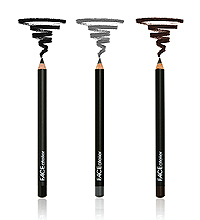 |
HYDROGENATED VEGETABLE GLYCERIDES, BEHENYL ALCOHOL, SILICA, ISOPROPYL MYRISTATE, STEARALKONIUM HECTORITE, PROPYLENE CARBONATE, STEARIC ACID, RHUS SUCCEDANEA FRUIT WAX, HYDROGENATED VEGETABLE OIL, MINERAL OIL (PARAFFINUM LIQUIDUM), HYDROGENATED CASTOR OIL, TRILAURIN, CETYL PALMITATE, CAPRYLIC/CAPRIC TRIGLYCERIDE, TRISTEARIN, POLYETHYLENE, STEARYL HEPTANOATE, BUTYL STEARATE, PETROLATEUM, METHYLPARABEN, PROPYLPARABEN, BHA. MAY CONTAIN: TITANIUM DIOXIDE (CI 77891), MICA (CI 77019), IRON OXIDE GREENS (CI 77288), CHROMIUM OXIDE GREENS (CI 77289), BISMUTH OXYCHLORIDE (CI 77163), CARMINE (CI 75470), FERRIC FERROCYANIDE (CI 77510), MANGANESE VIOLET (CI 77742), ALUMINUM POWDER (CI 7740). NOTE - all eye pencil shades listed at this time do not contain carmine. |
|
EYE SHADOW TALC, MICA, ZINC STEARATE, NYLON-12, MAGNESIUM STEARATE, DIMETHICONE, TRIMETHYL-SILOXYSILICATE, METHYLPARABEN, PROPYLPARABEN, TOCOPHERYL ACETATE. MAY CONTAIN: TITANIUM DIOXIDE (CI 78891), IRON OXIDES (CI 77491), CARMINE (CI 75470), BISMUTH OXYCHLORIDE (CI 77163), ULTRAMARINES (CI 77007), YELLOW 5 LAKE (CI 19140), MANGANESE VIOLET (CI 77742).
|
 |
CYCLOPENTASILOXANE, ISODODECANE, DIMETHICONE CROSSPOLYMER, POLY-GLYCERYL-3 DIISOSTEARATE, SILICA, DIMETHICONE, TRIMETHYSILOXYSILICATE, CAPRYLIC/CAPRIC TRIGLYCERIDES, TOCOPHERYL ACETATE, PHENOXYETHANOL. MAY CONTAIN: TITANIUM DIOXIDE (CI 77891), RED 7 LAKE (CI 15850), IRON OXIDES (CI 77491, CI 77492, CI 77499), YELLOW 5 LAKE (CI 19140), BLUE 1 LAKE (CI 42090), RED 33 LAKE (CI 17200). |
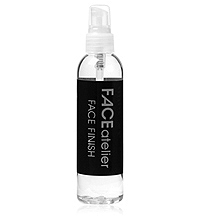 |
AQUA, BUTYLENE GLYCOL, GLYCERIN, CUCUMIS SATIVUS FRUIT EXTRACT, SODIUM HYALURONATE, SODIUM CITRATE, PANTHENOL, PROPYLENENE GLYCOL, AESCULUS HIPPOCASTANUM EXTRACT, DIAZOLIDINYL UREA, CITRIC ACID, TETRASODIUM EDTA, IODOPROPYNYL BUTYLCARBAMATE. |
 |
AQUA, ACRYLATES COPOLYMER, BEESWAX, PROPYLENE GLYCOL, COPERNICIA CERIFERA (CARNAUBA) WAX, OLEIC ACID, STEARIC ACID, GLYCERYL DISTEARATE, MAGNESIUM ALUMINUM SILICATE, GLYCERYL STEARATE, PVP, PHENOXYETHANOL, BUTYLENE GLYCOL, AMINOMETHYL PROPANOL, SODIUM LAURETH-12 SULFATE, SODIUM BENZOATE, DEHYDROACETIC ACID, GLYCERIN, TITANIUM DIOXIDE, CAPRYLYL GLYCOL, TETRASODIUM EDTA, POTASSIUM SORBATE, TOCOPHERYL ACETATE. MAY CONTAIN: IRON OXIDES CI 77499, MICA CI 77019. |
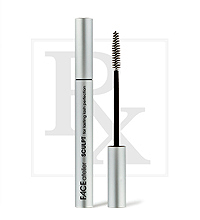 |
AQUA, GLYCERIN, PVP, ACRYLATES COPOLYMER, TALC, PROPYLENE GLYCOL, MICA, CYCLOPENTASILOXANE, DIMETHICONE, MAGNESIUM ALUMINUM SILICATE, GLYCERYL POLYACRYLATE, STEARIC ACID, TRIETHANOLAMINE, GLYCERYL STEARATE, CETYL ALCOHOL, PHENOXYETHANOL, TITANIUM DIOXIDE, XANTHAN GUM, METHYLPARABEN, CELLULOSE GUM, PANTHENOL, PROPYLPARABEN, TETRASODIUM EDTA, TOCOPHERYL ACETATE, ASCORBYL PALMITATE. |
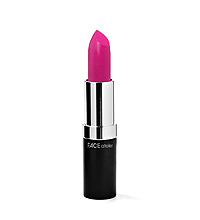 |
RICINUS COMMUNIS OIL, OZOKERITE, EUPHORBIA CERIFERA CERA EXTRACT, COPERNICIA CERIFERA CERA, ETHYLHEXYL PALMITATE, CETYL ACETATE, ISOTRIDECYL ISONONANOATE, PEG-150 DISTEARATE, CALCIUM SILICATE, STEAROXYMETHICONE/DIMETHICONE COPOLYMER, SESAMUM INDICUM SEED OIL, ISOPROPYL PALMITATE, DIMETHICONE, KAOLIN, QUATERNIUM-18, FLAVOR/AROMA, MICROCRYSTALLINE WAX, PROPYL GALLATE, DISODIUM EDTA, METHYLPARABEN, PROPYLPARABEN. MAY CONTAIN/PEUT CONTENIR: TITANIUM DIOXIDE, IRON OXIDES CI 77491, CI 77492, CI 77499, MICA, YELLOW 5 LAKE, RED 6 LAKE, RED 7 LAKE, RED 27 LAKE, BLUE 1 LAKE. |
|
POLYBUTENE, OCTYLDODECANOL,PETROLATUM, OZOKERITE, BHA, TRIHYDROXYSTEARIN, ASCORBYL PALMITATE, TOCOPHERYL ACETATE, BUTYROSPERMUM PARKII, METHYLPARABEN, PROPYLPARABEN, RETINYL PALMITATE, SQUALANE, CALCIUM SODIUM BOROSILICATE. MAY CONTAIN/PEUT CONTENIR: TITANIUM DIOXIDE CI 77891, IRON OXIDES CI 77491, CI 77492, CI 77499, MICA CI 77019, RED 7, 6 LAKE CI 15850, RED 30 LAKE CI 73360, RED 33 LAKE CI 17200, RED 27 LAKE 4510:2, RED 28 LAKE 45410, RED 36 LAKE CI 12085, RED 21 LAKE CL 45380:2, YELLOW 5 LAKE CI 19140:1, BLUE 1 LAKE CI 77861. |
|
|
ALCOHOL DENAT, OCTYACRYLAMIDE/ACRYLATES/BUTYLAMINOETHYL METHACRYLATE COPOLYMER, CETYL ALCOHOL, SODIUM SACCHARIN, FRAGRANCE. |
|
 |
STEARIC ACID, HYDROGENATED VEGETABLE OIL, CETYL PALMITATE, HYDROGENATED CASTOR OIL, HYDROGENATED COCO-GLYCERIDES, ETHYLHEXYL PALMITATE, BUTYL STEARATE, BEESWAX, MICA, STEARYL CAPRYLATE, STEARYL HEPTANOATE, TRISTEARIN, C10-18 TRIGLYCERIDES, TALC, CAPRYLIC/CAPRIC TRIGLYCERIDE, SYNTHETIC JAPAN WAX, ASCORBYL PALMITATE, TOCOPHEROL, [+/-:CI 73360 (RED 30 LAKE), CI 15850 (RED 7 LAKE), CI 15985 (YELLOW 6 LAKE), CI 77742 (MANGANESE VIOLET), CI 77891 (TITANIUM DIOXIDE), CI 77491 (IRON OXIDES), CI 77492 (IRON OXIDES), CI 77499 (IRON OXIDES), CI 75470 (CARMINE), CI 45410 (RED 27 LAKE), CI 42090 (BLUE 1 LAKE)] |
| OCTYLDODECANOL, ISOPROPYL MYRISTATE, CERESIN WAX, OZOKERITE, MICROCRYSTALLINE WAX, PETROLATUM, POLYBUTENE, CETYL ALCOHOL, JOJOBA ESTER, PALMITOYL OLIGOPEPTIDE, CYCLOPENTASILOXANE, MEADOWFOAM SEED OIL, SESAME SEED OIL, RETINYL PALMITATE, TOCOPHERYL ACETATE, ASCORBYL PALMITATE, ASCORBIC ACID, CITRIC ACID, PROPYLPARABEN, BHA, PPG-51/SMDI, BUTYROSPERMYM PARKIL (SHEA BUTTER), ALLANTOIN, TRIMETHYLSILOXYSILICATE, DIMETHICONE.
|
|
|
OCTYLDODECANOL, BIS-DIGLYCERYL POLYACYLADIPATE-2, ISOPROPYL MYRISTATE, CERESIN WAX, OZOKERITE, PETROLATUM, POLYBUTENE, CETYL ALCOHOL, JOJOBA ESTER, PALMITOYL OLIGOPEPTIDE, CYCLOPENTASILOXANE, MEADOWFOAM SEED OIL, SESAME SEED OIL, ALOE BARBADENSIS EXTRACT, RETINYL PALMITATE, TOCOPHERYL ACETATE, ASCORBYL PALMITATE, ASCORBIC ACID, CITRIC ACID, PROPYLPARABEN, BHA, PPG-51/SMDI, BUTYROSPERIUM PARKII (SHEA BUTTER), ALLANTOIN, TRIMETHYLSILOXYSILICATE, DIMETHICONE. MAY CONTAIN/PEUT CONTENIR: TITANIUM DIOXIDE CI 77891, IRON OXIDES CI 77491, MICA CI 77019, RED 7 LAKE CI 15850, RED 6 LAKE CI 15850, RED 30 LAKE CI 73360, RED 33 LAKE CI 17200, RED 27 LAKE CI 45410, RED 28 LAKE CI 45410, RED 36 CI 12085, RED 21 45380, YELLOW 5 LAKE CI 19140, BLUE 1 LAKE CI 42090, TIN OXIDE CI 77861. |
|
|
MINERAL OIL, CORN GERM OIL, POLYSORBATE 85, SAFFLOWER SEED OIL, CETYL ETHYLHEXANOATE, SORBITAN TRIOLEATE, SIMMONDSIA CHINENSIS SEED OIL, SQUALANE, MACADAMIA SEED OIL, GLYCERIN, TOCOPHEROL, ROSEMARY LEAF EXTRACT, CANOLA OIL, C12-15 ALKYL BENZOATE, DICAPRYLYL CARBONATE, ISOPROPYL PALMITATE, ETHYL OLEATE. |
|
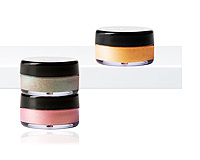 |
MICA. MAY CONTAIN: BISMUTH OXYCHLORIDE (CI 77163), TITANIUM DIOXIDE (CI 77891), IRON OXIDES (CI 77491, CI 77492, CI 77499),ULTRAMARINES (CI 77007), CHROMIUM HYDROXIDE GREEN (CI 77289), CHROMIUM OXIDE GREEN (CI 77288). KAOLIN, MANGANESE VIOLET (CI 77742), FERRIC FERROCYANIDE (CI 77510), CARMINE (CI 75470), FERRIC AMMONIUM FERROCYANIDE (CI 77510). |
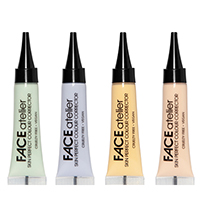 |
SKIN PERFECT COLOUR CORRECTORS WATER, CYCLOPENTASILOXANE, GLYCERIN, DIMETHICONE, PEG-10 DIMETHICONE, PEG/PPG-18/18, DIMETHICONE, SILICA, POLYSILICONE-11, NYLON 12, SILICA DIMETHYL SILYLATE, SODIUM CHLORIDE, PHENOXYETHANOL,ETHYLHEXYLGLYCERIN, TOCOPHEROL, TETRAHEXYLDECYL ASCORBATE, POLYSORBATE 40, ISOHEXADECANE, AMMONIUM POLYACRYLOYLDIMETHYL TAURATE. MAY CONTAIN (+/-): BLUE 1 LAKE (CI 42090:2), CHROMIUM OXIDE GREENS (CI 77288), IRON OXIDES (CI 77492, 77499), MICA (CI 77019), RED 27 LAKE (CI 45410), RED 7 LAKE (CI 15850), TITANIUM DIOXIDE (CI 77492).
|
|
AQUA, GLYCERIN, GLYCERYL POLYACRYLATE, SODIUM HYALURONATE, SATIVUS FRUIT EXTRACT, AESCULUS HIPPOCASTANUM EXTRACT, PROPYLENE GLYCOL, DIAZOLIDINYL UREA, PANTHENOL, TETRASODIUM EDTA, METHYLPARABEN, PROPYLPARABEN. |
|
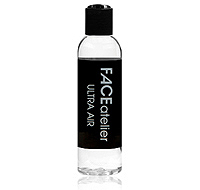 |
CYCLOPENTASILOXANE, ISODODECANE, TRIMETHYLSILOXYSILICATE, DIMETHICONE. |
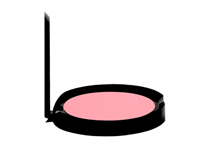 |
TALC, DIMETHICONE, MICA, ZINC STEARATE, ALUMINUM STARCH OCTENYLSUCCINATE, POLYETHYLENE, TRIMETHYLSILOXYSILICATE, NYLON-12, METHYLPARABEN, PROPYL-PARABEN, BUTYLPARABEN, ETHYLPARABEN, SQUALANE, BEESWAX. MAY CONTAIN: TITANIUM DIOXIDE (CL 77891), IRON OXIDES (CI 77491, CI 77492, CI 77499), MICA (CI 77019), CARMINE (CI 75470), RED 7 LAKE (CI 15850:1), RED 6 LAKE (CI 15850:1), RED 30 LAKE (CI 73360), RED 33 LAKE (CI 17200), YELLOW 5 LAKE (CI 19140:1), BLUE 1 LAKE (CI 42090:2), ULTRAMARINES (CI 77007). |
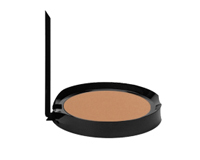 back to top back to top |
TALC, MICA, ALUMINUM STARCH OCTENYLSUCCINATE, NYLON-12, ZINC STEARATE, ALUMINUM CALCIUM SODIUM SILICATE, DIMETHICONE, OCTYLDODECYL STEAROYL STEARATE, TRIMEHTYLSILOXYSILICATE, METHYLPARABEN, PROPYLPARABEN. MAY CONTAIN: TITANIUM DIOXIDE (CL 77891), IRON OXIDES (CI 77491, CI 77492, CI 77499), BISMUTH OXYCHLORIDE (CI 77163), YELLOW 5 LAKE (CI 19140). |
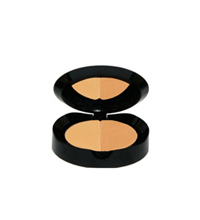 |
ALUMINUM STARCH OCTENYLSUCCINATE, PETROLATUM, HYDROGENATED COCO-GLYCERIDES, OCTYLDODECYL STEAROYL STEARATE, POLYBUTENE, POLYMETHYL-METHACRYLATE, COPERNICIA CERIFERA (CARNAUBA) WAX, MICROCRYSTALLINE WAX, HDI/TRIMETHYLOL HEXYLLACTONE CROSSPOLYMER, SILICA, ETHYLHEXYL PALMITATE, C20-40 ALCOHOLS, LAUROYL LYSINE, CETYL DIMETHICONE COPOLYOL. MAY CONTAIN: MICA (CI 77019), TITANIUM DIOXIDE (CI 77891), IRON OXIDES (CI 77491, CI 77492, CI 77499). |
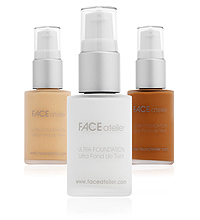 |
CYCLOPENTASILOXANE, AQUA, GLYCERIN, ALUMINUM STARCH OCTENYLSUCCINATE, CETYL DIMETHICONE COPOLYOL, POLYGLYCERYL-4 ISOSTEARATE, POLYGLYCERYL-3 DIISOSTEARATE, CETYL PEG/PPG-10/1 DIMETHICONE, HEXYL LAURATE, POLYGLYCERYL-3 DIISOSTEARATE, MICA, QUATERNIUM-18 HECTORITE, PROPYLENE CARBONATE, CELLULOSE GUM, NYLON-12, TRIBEHENIN, LAUROYL LYSINE, TRISTEARIN, PHENOXYETHANOL, METHYLPARABEN, PROPYLPARABEN. MAY CONTAIN/PEUT CONTENIR: TITANIUM DIOXIDE CI 77891, IRON OXIDES CI 77494, CI 77491, CI 77499, MICA CI 77019. This formula is identical to Ultra Foundation Pro. Only the container is different. |
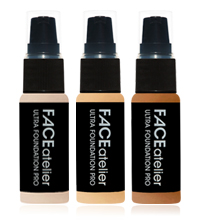 |
CYCLOPENTASILOXANE, AQUA, GLYCERIN, ALUMINUM STARCH OCTENYLSUCCINATE, CETYL DIMETHICONE COPOLYOL, POLYGLYCERYL-4 ISOSTEARATE, POLYGLYCERYL-3 DIISOSTEARATE, CETYL PEG/PPG-10/1 DIMETHICONE, HEXYL LAURATE, POLYGLYCERYL-3 DIISOSTEARATE, MICA, QUATERNIUM-18 HECTORITE, PROPYLENE CARBONATE, CELLULOSE GUM, NYLON-12, TRIBEHENIN, LAUROYL LYSINE, TRISTEARIN, PHENOXYETHANOL, METHYLPARABEN, PROPYLPARABEN. MAY CONTAIN/PEUT CONTENIR: TITANIUM DIOXIDE CI 77891, IRON OXIDES CI 77494, CI 77491, CI 77499, MICA CI 77019. This formula is identical to Ultra Foundation. Only the container is different. |
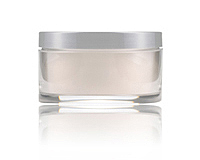 |
TALC, MICA, ZEA MAYS STARCH, ALUMINUM STARCH OCTENYLSUCCINATE, TRIMETHYLSILOXYSILICATE, PENTAERYTHRITOL TETRAOCTANOATE, ZINC STEARATE, NYLON-12, LAUROYL LYSINE, METHYLPARABEN, PROPYLPARABEN, ETHYLPARABEN. MAY CONTAIN: TITANIUM DIOXIDE (C1 77891), IRON OXIDES (CI 77499), ULTRAMARINES (CI 77007). |
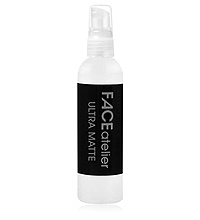 back to top back to top |
CYCLOPENTASILOXANE, ISODODECANE, DIMETHICONE CROSSPOLYMER, POLYSILICONE-11, DIMETHIONE, SILICA. |
 |
TALC, MICA, ZEA MAYS STARCH, ALUMINUM STARCH OCTENYLSUCCINATE, ZINC STEARATE, NYLON-12, LAUROYL LYSINE, METHYLPARABEN, PROPYLPARABEN, ETHYLPARABEN, TRIMEHTYLSILOXYSILICATE. MAY CONTAIN: TITANIUM DIOXIDE (CL 77891), IRON OXIDES (CI 77491, CI 77492, CI 77499), ULTRAMARINES (CI 77007). |
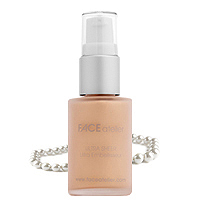 |
AQUA, CYCLOMETHICONE, PROPYLENE GLYCOL, TALC, DIMETHICONE COPOLYOL, TRIETHANOLAMINE, POLYGLYCERYL-3 DISOSTEARATE, SODIUM CHLORIDE, TRIBEHENIN, SODIUM HYALURONATE, HYDROGENATED LECITHIN, CUCUMIS SATIVUS FRUIT EXTRACT, AESCULUS HIPPOCASTANUM EXTRACT, RETINYL PALMITATE, METHYLPARABEN, PROPYLPARABEN, TOCOPHERYL ACETATE. MAY CONTAIN/PEUT CONTENIR: BISMUTH OXYCHLORIDE CI 77163, MICA CI 77019, IRON OXIDES CI 77491, CI 77492, Cl 77499, TITANIUM DIOXIDE CI 77891. This formula is identical to Ultra Sheer Pro. Only the container is different. |
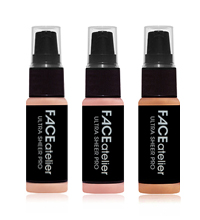 |
AQUA, CYCLOMETHICONE, PROPYLENE GLYCOL, TALC, DIMETHICONE COPOLYOL, TRIETHANOLAMINE, POLYGLYCERYL-3 DISOSTEARATE, SODIUM CHLORIDE, TRIBEHENIN, SODIUM HYALURONATE, HYDROGENATED LECITHIN, CUCUMIS SATIVUS FRUIT EXTRACT, AESCULUS HIPPOCASTANUM EXTRACT, RETINYL PALMITATE, METHYLPARABEN, PROPYLPARABEN, TOCOPHERYL ACETATE. MAY CONTAIN/PEUT CONTENIR: BISMUTH OXYCHLORIDE CI 77163, MICA CI 77019, IRON OXIDES CI 77491, CI 77492, Cl 77499, TITANIUM DIOXIDE CI 77891. This formula is identical to Ultra Sheer. Only the container is different. |
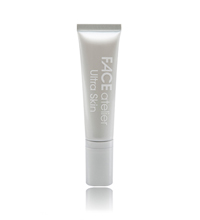 |
AQUA, CYCLOPETASILOXANE, ALUMINUM/MAGNESIUM HYDROXIDE, STEARATE, POLYGLYCERYL- 4 ISOSTEARATE, CETYL PEG/PPG-10/1 DIMETHICONE, HEXYL LAURATE, CETYL DIMETHICONE COPOLYOL, ISODODEANE, DIMETHICONE CROSSPOLYMER, C20-22 ALKYL PHOSPHATE, C20-C22 ALCOHOLS, SODIUM CHLORIDE, METHICONE, SODIUM BENZOATE, SILICA, ALUMINUM OXIDE, POLYGLYCERYL-3 DIISOSTEARATE, PHENOXYETHANOL. MAY CONTAIN/PEUT CONTENIR: TITANIUM DIOXIDE CI 77891, IRON OXIDES CI 77491, CI 77492, CI 77499, MICA CI 77019, ULTRAMARINE CI 77007. |
interesting READING...
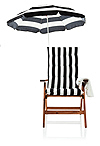 |
|
|
Countless beauty lines offer a plethora of products containing SPF but do you know that SPF in makeup and moisturizers offers inadequate protection. In fact, according to dermatologist Dr. Leslie Baumann, you need 7 times the normal amount of foundation and 14 times the normal amount of powder to get the sun protection factor on the label. Although many modern cosmetics, and particularly certain moisturizers, contain SPF ratings as high as 30, this protection is extremely limited and should not be considered sufficient without additional sunscreen for prolonged exposure. Moreover, cosmetic SPF is typically absorbed by the skin rather than kept on the surface as makeup seeps into your pores. For minimal durations (i.e. walking to your car) the SPF of your moisturizer or makeup may be sufficient. But for any extended summertime exposure, it is necessary to have additional protection. Further, sunscreen must be re-applied at least every three to four hours to be effective. Generally, women do not re-apply moisturizer or foundation.
SPF in moisturizers is not particularly effective because sun block should be applied to clean, dry skin. Mixing SPF with moisturizers prevents the sunscreen from effectively adhering to, and therefore protecting the skin. Even less effective is SPF in makeup. The American Academy of Dermatology recently advised women not to use a foundation for SPF protection because it tends to lose its ability to shield the sun after a couple hours, as makeup shifts and settles in fine lines and pores. Internationally renowned dermatologist Dr. Frederic Brandt also warns that cosmetics with SPF are not enough to keep you covered. “The SPF lasts just as long as the products they are in,” he notes. “As your makeup fades, so does its protection.” The effectiveness of SPF in lipsticks and glosses is also suspect as these products are typically formulated not to be absorbed. According to Dr. Ron Shelton, Assistant Professor of Dermatology at Mount Sinai Medical Center in New York City, not only does makeup not bind to the skin as well as sunscreen, but when sunscreen is combined with something else, it often does not retain all of its UV-filtering properties.
At the best of times, even those who use traditional sunscreens are not being adequately protected. Sunscreen must be applied liberally, and a study published in the Archives of Dermatology (October 2002) revealed “sunscreen users are only applying 50 percent of the recommended amount, so they are only receiving 50 percent of the SPF protection.” Applying that logic to cosmetics, it is extremely unlikely that women apply enough product to get the SPF protection promised on the label, assuming that SPF in makeup was effective in the first place. To make matters worse, many women mistakenly believe that using more than one product that contains sunscreen increases protection. Not only do two sunscreens not add up to a larger SPF number, but combining two sunscreen products often diminishes SPF values.
One must ask if it isn’t effective, why are an increasing number of skin care and cosmetic companies including SPF in their products? It’s confusing, misleading and potentially dangerous. Clearly, consumers today must be informed, be vigilant and beware.
|
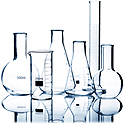 |
|
|
The growth of the internet has coincided with an explosion of misinformation, often started by unscrupulous companies who rely upon innuendo and rumor to market their products. Parabens is an excellent example of how a highly beneficial and harmless ingredient has been demonized. Parabens are a group of preservatives found to be most effective in fighting off harmful bacteria in your cosmetics and skincare. You may recognize these ingredients on your label listed as methylparaben, propylparaben, butylparaben and/or isobutylparaben, which are the most common parabens used in cosmetics and skincare. Even at very low percentage levels (usually only added into products at 0.01 – 0.03%), parabens have superpower abilities in preserving your products. Should you avoid products with parabens? In a word, no. Despite the media frenzy surrounding parabens, the published research and global cosmetic regulatory organizations are making that answer clear. Parabens, especially in the small amounts used in personal-care products, do not pose a significant health risk. There is no legitimate reason for consumers to avoid cosmetic products that contain parabens. According to these studies, parabens are "fully metabolized before they enter the blood stream." In a review of the estrogenic activity of parabens, the author concluded that based on maximum daily exposure estimates, "it was impossible that parabens could increase the risk associated with exposure to estrogenic chemicals." You may wonder why you need any kind of preservatives at all. When you apply your face cream or foundation and stick your finger inside the jar, from the moment your finger touches the product, you are introducing bacteria into the formula. If there were no preservatives in your formula, bacteria will start to grow (formulas are made up mostly of water and fats in which bacteria thrives). Before long, you will notice that it is becoming rancid, separate or smells funny. There are many new paraben alternatives available on the market today. However, most of these preservatives must be used at levels 6 or 7 times higher than parabens in order to have the same bacteria-fighting abilities. What does this mean? Well, the higher the preservative content in your cosmetics, the greater the potential for skin irritation. In addition, using higher level preservatives often has a negative impact on the overall feel and texture of the product. Fear-based advocacy groups such as EWG and Campaign for Safe Cosmetics have distorted the facts and created unwarranted concern over all preservatives, not just parabens. They've demonized the use of parabens, but in fact they are very useful preservatives with a long history of safe use. The original reports suggesting they caused breast cancer were badly flawed and based on a very poorly performed research that reached a totally erroneous conclusion. Parabens have NOT been linked to breast cancer. Even the notorious Darbre study in 2004 (dubiously claiming to have detected parabens in human breast cancer tissue) specifically stated in the conclusion that the results did NOT prove any link. No breast cancer research charity links parabens to cancer and, in fact, all the ones we have checked have statements on their web site specifically stating that there is no proven link. Moreover, the FDA and health organizations worldwide deem parabens to be safe for use in cosmetic products even after evaluating additional studies performed as a result of this controversy. Sources: Drug Metabolism and Pharmacokinetics, October 2010, pages 568-577; http://ec.europa.eu/health/scientific_committees/consumer_safety/docs/sccs_o_041; International Journal of Toxicology, Supplement 4, 2008, pages 1-82; Water Research, November 2008, pages 4578–4588; Cosmetics & Toiletries, January 2005, page 22; Toxicology, January 2005, pages 471–488; Menopause, March–April 2002, pages 145–150; Critical Reviews in Toxicology, Golden et al, 2005; Menopause, May–June 2004, pages 281–289; Journal of the American Medical Women's Association, Spring 2002, pages 85–90; Journal of Steroid Biochemistry and Molecular Biology, January 2002, pages 49–60; American Journal of Epidemiology October 1996, pages 642–644). |
the MAGIC of SILICONES |
|
No single class of materials has had such an impact on modern cosmetic formulation as the silicones. Explains two-time Emmy award winning makeup artist Kevin James Bennett, “silicones unique properties have completely redefined the performance and look of modern makeup.” Women today are bombarded by products claiming benefits that are at best exaggerated, and at worst deceptive or untruthful. Unlike many cosmetic ingredients, such as most herbal extracts or vitamins (whose main appeal is their name and picture on the label, as opposed to functionality), silicones are added to cosmetics simply because they work. Silicones are one of the most natural ingredients in cosmetic formulation as they're derived from silica (sand is a silica) which is in turn derived from quartz, one of the most plentiful and naturally occurring minerals on earth. Silicones made their first appearance in cosmetic formulations in the early 1990’s, proving particularly useful in liquid makeup. They quickly become ubiquitous in color cosmetics because of their multi-functional properties. The unique fluid properties of silicone give it a great deal of slip and in its various forms feels like silk on the skin. It imparts emolliency and significantly enhances a product’s lifespan and effectiveness. In emulsions, silicones give a soft, smooth product that is pleasant to apply and, in the case of cyclomethicones, imparts a unique skin feel. They are naturally heat and water resistant while absorbing sebum (the oily substance produced by certain glands in the skin). It's time to dispense with the myth that silicones irritate the skin and cause acne, as nothing could be father from the truth. Dermatologist Dr. Zoe Diana Draelos, Clinical Associate Professor of Dermatology at Wake Forest University School of Medicine recommends that women, and particularly those with sensitive skins, choose a emulsions or creams with a silicone base because silicones have a very low incidence of skin irritation, and are proven to not cause acne. When used properly in a formula, they also help liquid foundations form a lightweight and flexible second skin. Consequently, silicone-based foundations are ideal for mature or troubled skin. Because the size of silicone molecules is larger than human pores, a silicone-based product like Ultra Foundation floats on the skin, rather than settling in fine lines and wrinkles. It's thanks to its use of silicones that many of FACE atelier's products are age-neutral, meeting the needs of consumers ranging from teenagers suffering from acne to mature women dealing with the changing needs of aging skin. The use of silicone has also revolutionized pressed and loose powder products. The addition of silicone creates a longer-lasting product that neither creases nor looks cakey. The pigments in these products are surrounded by the silicones, enabling them to go on smoothly while at the same time creating a barrier between the powder and the skin. Unlike a talc-based product that falls into creases or skin imperfections, these powders float on the surface of the skin. The silicones create a cushion between the powder and the skin, no longer emphasizing fine lines and wrinkles. It should be noted that the inclusion of silicone does not necessarily guarantee a better product. However, when a company’s best intentions are married with sophisticated formulations, women are the happy beneficiaries of high-performing products that represent the next generation of makeup. |
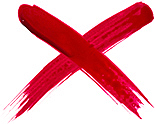 |
how SANITARY is your MAKEUP? |
|
Given that antibiotic-resistant bacteria and the threat of global pandemics are hot topics these days, it’s a good time to revisit the issue of makeup safety. If an ounce of prevention is worth a pound of cure, how can we ensure that makeup remains uncontaminated and tools safe to use? Much has been written about the hazards of using communal makeup testers, yet serious problems from cosmetics are rare. And the most serious problems result from usage, not contamination. That said, we still need to ensure that makeup and its application – be it at home, in a store or a makeup artist’s kit - is safe and sanitary. There are advantages to living in the 21st century, and one of them is that today’s cosmetics are much safer due to the use of preservatives. Cosmetics are one of the safest consumer products in the world - we've yet to hear of death of lipstick. And infections due to makeup are far less common today because products have superior preservative levels in them. While some condemn their use in makeup, preservatives protect consumers and help maintain product integrity by combating microbial growth. Products advertised as preservative-free may actually be less healthful than their chemically enhanced counterparts. Dr. Alfred Balbula, Montreal dermatologist and McGill University Assistant Professor of Medicine, maintains that a preservative-free emulsion brimming with bacteria is likely more harmful than one containing synthetic preservatives. But preservatives do not guard against the perils of improper usage, bad habits and ineffective cleaning of product and tools. You may be surprised to learn that the most common cosmetic-related injury is caused by unsafe mascara application. An untreated corneal scratch by a mascara wand can lead to infections, corneal ulcers and in rare cases, blindness. If you sleep without removing mascara, flakes can fall into the eye, causing itchy, bloodshot eyes as well as infections and corneal scratching. These injuries are easy to avoid. Apply mascara only when stationary, and remove eye makeup before bed. The other cause of cosmetic-related injury is infection. Diseases that can occur include conjunctivitis or pink eye, cold sores, viral gastrointestinal infections and meningitis (typically from lip gloss). Eye makeup has the highest risk of contamination, and unfortunately, eyes are particularly susceptible to infection. Consumers may also suffer from common underlying eye problems such as blepharitis (an inflammation of the lid margin) and dry eye, making them less tolerant of contaminated makeup that can invade the tear film. Lip products can spread germs from saliva and lip infections. Liquids and creams are easily contaminated and can't be sanitized. So what can we do? It’s drummed into our head from the time we can reach for a toy that it’s good to share, but it’s a dangerous practice when it comes to makeup. The #1 rule concerning cosmetic safety is NEVER SHARE MAKEUP OR APPLICATORS, and in particular eye and lip products. Brushes, mascara wands, sponges and puffs pick up bacteria from the skin and transfer them back to the makeup. In addition to not sharing, the following are easy-to-follow ways to avoid contaminating makeup in any setting: 1. Wash hands thoroughly before ‘putting on your face’, or applying makeup on someone else. 2. Use products that are less susceptible to contamination, such as foundation or creams with a pump as opposed to a cap. Throw away powder puffs, sponges or any other applicator that can’t (or won’t) be cleaned on a regular basis. Put makeup away after using it. Leaving it open makes it more susceptible to airborne viruses and bacteria. 3. Wash your personal brushes regularly and never use old applicators with new product as they may transfer micro-organisms to the new cosmetic. Retailers and makeup artists should clean brushes after each client/consumer. 4. Throw out your eye makeup after an eye infection. The U.S. Food and Drug Administration (FDA) advises to get rid of all of it, but at the very least discard mascara, liquid eye liner and other eye products that are a paste, liquid or cream if there were used when the eye was infected. 5. Store makeup in a cool, dry place, away from moisture and heat. Warm, moist makeup is a breeding ground for bacteria. Keep makeup containers closed tight, out of sunlight and avoid temperatures that exceed 85° F. Excess heat can ruin makeup as well as cause its preservative to lose effectiveness. No surprise - hot cars aren't good for makeup. 6. Never add liquid to a product unless instructed to do so. Don’t add fluid in an attempt to restore consistency and never use saliva to moisten anything, as this can introduce bacteria. 7. Don’t pump mascara. All that does is drive air that may be full of micro-organisms into the container, or promote the growth of bacteria that’s already there. 8. Be a smart consumer and do a little research before you buy. According to the FDA, many cases of contamination are due to manufacturers using poorly designed, ineffective preservative systems, and not testing the stability of the preservatives during the product's customary shelf life and under normal use conditions. Be very wary of preservative-free products, especially if they’re creams or liquids. They probably have the shelf-life of milk and extremely prone to spoiling and contamination. 9. When it doubt, throw it out. Read the fine print regarding a product’s shelf life as not only are preservatives lose effectiveness over time, which is why cosmetics have a shelf life. Throw makeup away if the color changes or an odor develops. Separation doesn't necessarily mean that a product has spoiled. It often occurs because some ingredients are heavier than others. If the separation remains after vigorous shaking, then you should throw it out. These are simple recommendations to follow when it comes to ones private cosmetic stash, but they’re futile if you’re one of multiple users in a retail environment, or a makeup artist does your makeup using his or her kit. In a retail setting, you may think that using a disposable applicator for testing makeup is sufficient, but there’s no guarantee that the product isn't already contaminated. If you want to test a product, ask for a new tester. If you've no option but to use an open cosmetic tester, never apply it to skin that’s broken or abraded. In all cases, keep it away from your lips and eyes. Given that preservatives help keep makeup safe, think carefully before using a tester of preservative-free makeup. The above may not apply when you’re having your makeup done by a makeup artist, as they rarely carry unopened containers in their kit. Most makeup artists scrupulously maintain the hygiene of their products and tools. Aspiring makeup artists are taught to do makeup without their hands ever touching the client. Products are mixed on a palette with a spatula; application is with a brush that is sanitized after every client. Disposable mascara wands are dipped once into a container and then discarded. If you still have doubts, don’t be afraid to ask questions. You can also seek references from previous clients and ask that the artist’s hands are sanitized before application. The final challenge is how to sanitize makeup. It appears that the only effective solution is to use 70-95% alcohol. It works instantly and effectively to kill 99.9% of bacteria and most viruses if applied for thirty seconds. Be skeptical of any product that promises to sanitize makeup and tools if it doesn't contain a minimum of 70 per cent alcohol and/or isn't applied for thirty seconds. Lipsticks, brushes and mixing palettes can be sanitized by dipping them in a minimum 70 per cent alcohol solution for thirty seconds. Many alcohol-based brush cleaners may not be 70 per cent alcohol. Clean doesn't necessarily mean sanitized. Sharpen pencils with a sharpener that’s been sanitized before use. Emulsions, creams and pastes can't be sanitized and it’s questionable if you can sanitize a pressed powder product without seriously compromising its performance. If you use a product and you get a rash or parts of face don't feel quite right, then stop using it. The product could be contaminated or you could be allergic to an ingredient. Tough to say but as in often the case, the best defense is using your common sense. |
 |
MINERAL OIL + PETROLATUM - FACT versus FICTION |
|
Welcome to two more products that unscrupulous companies and assorted cosmetic safety advocates love to demonize. Yet cosmetics-grade mineral oil and petrolatum are considered to be among the safest, most non-irritating moisturizing ingredients on earth. And bonus - they’re highly effective anti-oxidants. Further, they're regulated substances that are subject to an incredibly high standard when used in cosmetic formulation. Mineral oil is a clear, odorless oil derived from petroleum that's widely used in cosmetics because it rarely causes allergic reactions and it can’t become a solid that clog pores. Mineral oil's reputation suffers from its association with petroleum and unfounded claims that it’s bad for and ages skin. Yet petrolatum and its cousin, petroleum jelly, have been staples in hospitals for over 100 years. Yet despite petrolatum's long history in the personal care industry, concerns have been raised about its safety. There can be contaminants in low-grade petrolatum, however all petroleum that's used in cosmetics must meet a country’s Health Department’s restrictions for impurity. High-quality petrolatum goes through a refining process until it's safe to use and there is no risk of contaminants. Both mineral oil and petrolatum may keep air off the skin to some extent, but that’s what a good antioxidant is supposed to do. Moreover, they are both known to be efficacious in wound healing, and are also among the most effective and cost-effective moisturizing ingredients available. The confusion surrounding these two products is caused in part by cosmetics companies and people who use information about non-purified mineral oil and petrolatum as a scare tactic. The mineral oil used in skin-care products is certified as either USP (United States Pharmacopeia) or BP (British Pharmacopeia). Ditto petrolatum. They are safe, soothing, non-irritating, and perfectly healthy for skin. Companies in all industries have long used misinformation and fabricated studies as a marketing tool. Remember – cigarette manufacturers claimed for decades that their products were safe. And we all know how that story ended… Sources: Cosmetics & Toiletries, January 2001, page 79; and Cosmetic Dermatology, September 2000, pages 44–46;Cosmetics & Toiletries, February 1998, pages 33–40; Journal of Dermatologic Science, May 2008, pages 135–142; International Journal of Cosmetic Science, October 2007, pages 385–390; European Journal of Opthalmology, March-April 2007, pages 151–159; International Wound Journal, September 2006, pages 181–187; Ostomy Wound Management, December 2005, pages 30–42; and Dermatitis, September 2004, pages 109–116. |
